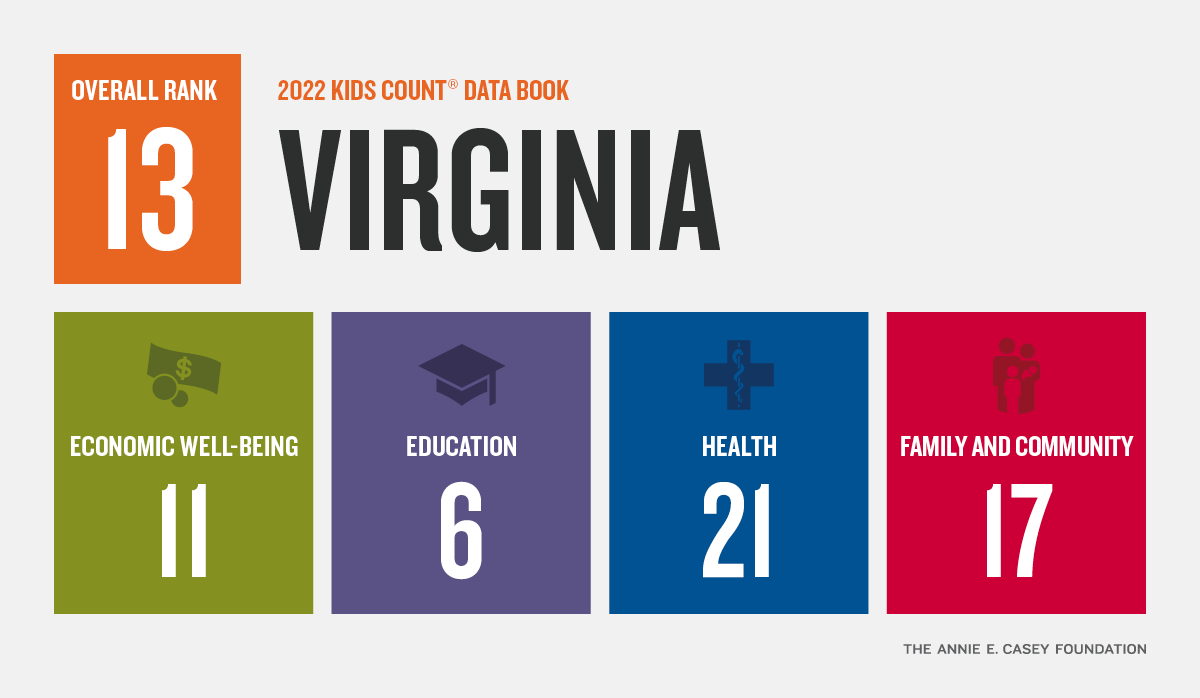

The 2022 KIDS COUNT Data Book was recently released by the Annie E. Casey Foundation, an annually published resource that tracks child well-being nationally as well as state by state and ranks the states accordingly. The report is based on the latest available data for 16 key indicators. Policymakers, researchers, and advocates can continue to use this information to help shape their work and build a stronger future for children, families, and communities.
The 2022 report includes the most recent data from 2020. Due to several challenges in data collection during the pandemic, several years of data needed to be aggregated for stable results. A letter from the Annie E. Casey Foundation President, Lisa Hamilton, highlights the most recent data we have that reflect how parents and families are faring during the pandemic. This letter highlights the 1.5 million children who are struggling to make it through the day.
Overall, Virginia is ranked 13th in the nation. The data in this year’s report include both pre-pandemic and more recent figures. Here’s where Virginia lands in each domain:
The Virginia KIDS COUNT data center includes these indicators and hundreds more at the state and even local level over time. For example, interested in learning more about the percent of children in poverty across Virginia? The Virginia KIDS COUNT data center has data available by locality and race. Learn more.
Sign up to receive data news and updates from us.
Read More Blog Posts